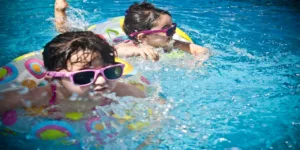Some of the primary reasons for having a pool are enjoyment, fun, and training. The therapeutic and recreational benefits of owning a pool take the monotony out of the daily routines of work and other responsibilities. Sadly, sometimes the benefits come with contingencies and risks. Pool deaths are common, and the highest incidence is in the pediatric age group. Drowning accounts for the second highest cause of unintentional injury death after road traffic accidents for children ages 1-14 years.
Several factors can explain the high incidence of drowning among children. Firstly, only a few children know how to swim. Swimming is usually taught to teenagers, and younger children are often left out. Unfortunately, children who start training early are not exposed to advanced techniques that can save them from drowning. Secondly, children have a dangerous sense of curiosity. Babies are notorious for crawling into pools, while small children occasionally swim beyond the shallow end. Unfortunately, not everyone can be rescued.
Since children are at a much highest risk than adults of drowning in a pool, we must protect them. Here are options that will make your pool safe for your children.
Mount pool alarms
It is advisable to install alarms in and around the pool even if covers and barriers are present. The alarm sensors detect movement and changes in water pressure, and it goes off when anything falls in the pool. Moreover, the alarm is programmed to the specifications of the pool and the custom inputs from the owner. Smart alarms are also available and allow Wi-Fi or Bluetooth connection for remote smartphone operation.
Additionally, you can install an alarm at the entrance door to your pool. As a result, you will get notifications whenever someone accesses the pool. Alarm systems are not only great for protecting children but also pets.
Construct a fence around the pool
It is one of the most used ideas for ensuring safety around the pool. When there are barriers around your swimming pool, monitoring the movement of children is easy. Nonetheless, the design of the fence should be impenetrable to children. For example, the barrier should cover a considerable height that a child can not climb. Moreover, slitted fence designs are ideal as they allow visibility into the pool area for monitoring. Furthermore, latches and locks are necessary additions to the pool’s entry gates, and only adults should have access. Finally, finer details like the swing direction of the pool gates and weight should also be considered as they affect children’s accessibility to the pool.
Pool covers
Pool covers are laid out when the swimming pool is not in use. Many people reserve these covers for cold seasons and water treatment days. However, they should be used whenever the pool is not in use. The covers fit perfectly across the pool to ensure a toddler won’t find its way inside. Moreover, they can take on a lot of tensile pressure and resist caving in if a child walks on the cover’s surface.
Currently, many swimming pools have automatic pool covers, mesh covers, and safety nets. The covers protect not only the swimming pool water but also the users. Therefore, investing in a pool cover might prevent a disaster, especially if you have children.
The pool safety tips for children are not limited to alarm systems, fencing, and pool cover. You can also ensure your children get proper training and learn how to respond to emergencies. In conclusion, every parent wants their children safe, and therefore, taking all the necessary steps to ensure your pool is safe is a top priority.
Written by Barbara McGee







